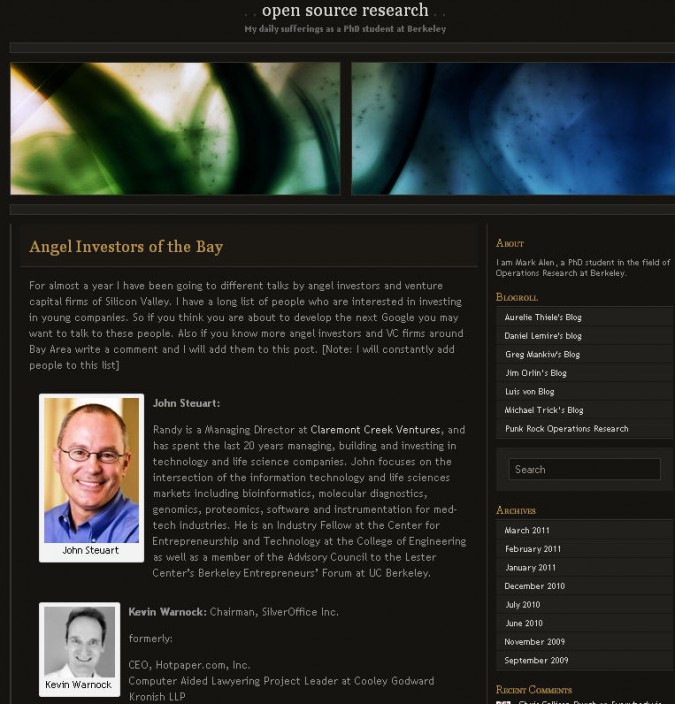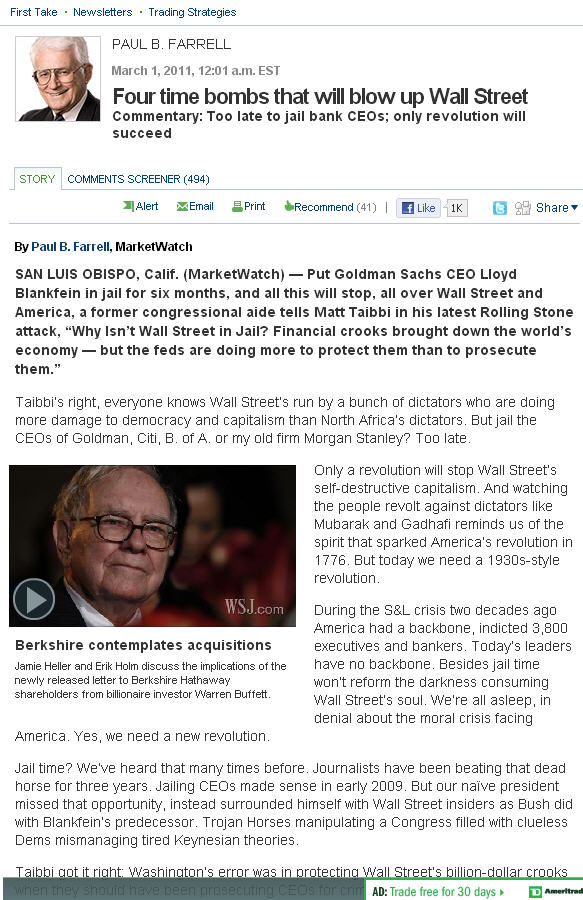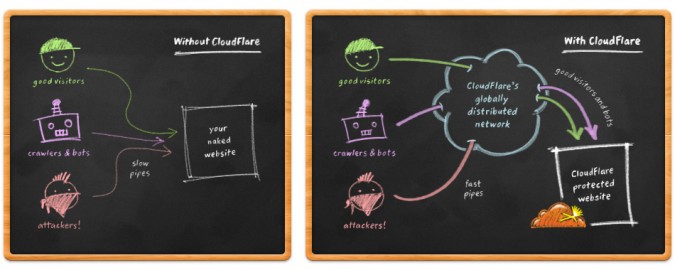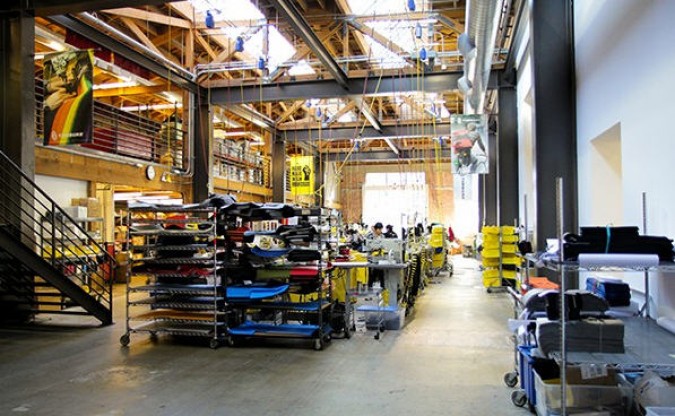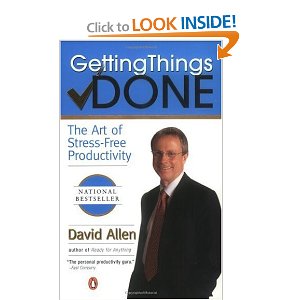Archive for the ‘Work’ Category
I hope Harbor Freight never gets acquired
I love the tool store Harbor Freight. To my knowledge, there’s no store like it in the San Francisco Bay Area, and perhaps in the entire United States.
What’s to love?
The prices are just so far below those at Home Depot and Lowes and the neighborhood hardware store that you can afford to by twice or three times as many tools. I can’t think of any other example of a large sector where just one business dominates the bargain priced end of the business as does Harbor Freight.
Some will say Harbor Freight tools are junk, but I disagree. They are quite good enough for home hobbyist use. I’ve only had one power tool break, but I was really overdoing it – getting it too hot by continuous use for over an hour. It was an electric planer. I replaced it for a new one for just $39.95. Not a big deal, and I learned my lesson to give the tools more of a break to cool down.
I fear that if Home Depot or Lowes were to acquire Harbor Freight they would either raise the prices or shut it down, to avoid the competition.
What’s my latest super bargain purchase from Harbor Freight? An 11 horsepower gas engine with an iron clad two year extended warranty where they give you a new engine if the original one breaks. All you have to do is bring in in any condition what’s left of the engine and they immediately hand you a new unopened new engine in the box. All of this for under $300! I am going to make a super quiet battery charger from this engine by having it run at idle, not full speed. Idle is about 1,800 RPM, like a high end diesel generator that costs $5,000 and up. I don’t need or want the 5,000 – 10,000 watts that are produced by a high end diesel generator. I would be thrilled with a quiet 1,500 watt generator, which is what I hope to get from this Harbor Freight engine run through my Trace SW4024 inverter via a Delco 105 amp 24 volt alternator, I picked one up last week on EBay today for less than $100 including shipping. I will put this engine in a sound box and cool it with a pair of Honda Civic car engine radiators I got new from Amazon for $160 including a dedicated 12 volt radiator fan matched to the radiator that will be outside the sound deadening enclosure. Once I convert the engine to run on propane, I’ll have an electric start quiet, environmentally friendly and very quiet generator for a very low price. Should the engine blow up for any reason, I get a brand new one with no questions asked. I could even carry a spare since they weigh just 74 pounds.
Harbor Freight makes inventing, building and experimenting easier to afford, and I’m glad they appear to be thriving.
Even so, there is probably a dark side to Harbor Freight such as cruel working conditions that I don’t know about. If you have any information about such things, please post a thoughtful comment. I could be persuaded to not shop there if warranted, but to my knowledge their products are made in China, just like I suspect most of the tools for sale at the big box super centers.
I’m an angel, apparently…
I do Google my name on occasion, like most people. Today I was shocked to find myself listed as an angel investor on the blog Mark Alen, a PhD student in the field of Operations Research at University of California at Berkeley.
I have made 3 angel investments, but I knew the founders as legitimate close friends before I invested. I’ve never held myself out to the public as an angel investor, but somehow Mark has decided I’m an angel investor.
This is flattering, so Thank You Mark.
Four time bombs that will blow up Wall Street
Four time bombs that will blow up Wall Street – This is one of the more forcefully worded predictions I’ve read of really big trouble coming in the United States. This is published by MarketWatch, which is owned by Dow Jones, which is owned by News Corporation.
I saw Charles Ferguson speak at the Commonwealth Club of California this week. He’s the director behind the Academy Award winning Inside Job movie. He believes many Wall Street players should be jailed.
I agree.
Something tells me Michael Milken would agree as well. I wonder if Milken would have been jailed if he had done what he was alleged to have done recently instead of in the 1980s.
The Four time bombs article I link to here says that during the US Savings and Loan Crisis of about 20 years ago, the US actually indicted 3,800 bankers and executives! I didn’t know that. I remember the S & L crisis… I worked at Cooley LLP during that time, and Cooley did a lot of work for FSLIC, which was the government insurance fund that was made insolvent by the crisis. The agency no longer exists as its responsibilities were added to those of the FDIC.
(As a funny aside, I recall one of the word processor staff members who didn’t know about the FSLIC typed ‘fizz lick’ when she heard FSLIC on one of the dictation cassette tapes she was transcribing. This caused the attorney to burst out laughing when he read the transcript…)
I find it appalling that today’s bank executives are receiving record bonuses when the economy is still in a shambles. Ideally, they would have their pay docked and receive no bonuses while things are so bad. I haven’t seen the movie Inside Job yet, but it’s on my Netflix queue.
CloudFlare – what do you think?
I learned about an interesting company called CloudFlare yesterday, and I wonder what people think about their service. On first look, it seems great. But it also seems almost too good to be true, so I’d thought I’d write about it and see what kind of comments surface.
Here’s a recent article written by the CEO and co-founder of CloudFlare. This appeared on TechCrunch, and the article generated a lot of comments, many of them suspicious that CloudFlare’s business model is unworkable.
Before I describe CloudFlare, here’s how the company describes its service on its overview page:
CloudFlare protects and accelerates any website online. Once your website is a part of the CloudFlare community, its web traffic is routed through our intelligent global network. We automatically optimize the delivery of your web pages so your visitors get the fastest page load times and best performance. We also block threats and limit abusive bots and crawlers from wasting your bandwidth and server resources. The result: CloudFlare-powered websites see a significant improvement in performance and a decrease in spam and other attacks.
CloudFlare’s system gets faster and smarter as our community of users grows larger. We have designed the system to scale with our goal in mind: helping power and protect the entire Internet.
CloudFlare can be used by anyone with a website and their own domain, regardless of your choice in platform. From start to finish, setup takes most website owners less than 5 minutes. Adding your website requires only a simple change your domain’s DNS settings. There is no hardware or software to install or maintain and you do not need to change any of your site’s existing code. If you are ever unhappy you can turn CloudFlare off as easily as you turned it on. Our core service is free and we offer enhanced services for websites who need extra features like real time reporting or SSL.
Here’s my summary on what CloudFlare does:
Let CloudFlare take over your DNS. They will then copy the static parts of your site to their servers in 5 geographically diverse data centers, and when web visitors try to visit your site, CloudFlare will serve the static parts of your site from their mirror copy that is closest to the web visitor. This will make your website load faster, pleasing your visitors. Since all your traffic is seen by CloudFlare, they can also do some security analysis, and block traffic they deem to be unwanted, saving you from having to do this security analysis yourself. CloudFlare provides this service for free to most users, and makes money by charging $20 a month to some sites that want more features.
I asked one of their engineers how they figure out what parts of your site are suitable for mirroring, and he said they watch how Google caches your site and mimick what Google is doing. If this is cool with Google, I’m impressed with this technique, since CloudFlare doesn’t have to develop, maintain and improve code to figure this problem out itself.
The big issue I see is that $20 a month is a tiny amount of money, and if a big site signed up, I worry that site could bleed CloudFlare to death with bandwidth costs, which CloudFlare apparently is paying itself from the $20 a month.
This reminds me of a story I heard years ago about Purple Communications, the company I sold my first Internet startup to to in the first dot com bubble. Purple was then offering unlimited Blackberry airtime for $59.95 a month, but they had to purchase the actual airtime from actual wireless carriers, since they were a value added reseller. This was viable with modest Blackberry users, but sadly, a few customers were using their devices way too much, and were costing Purple thousands of dollars a month per device! They solved this by changing their terms of service and kicking these unprofitable customers to the curb, but it was a tough lesson to learn and respond to.
I hope CloudFlare doesn’t have to relearn much the same lesson.
I briefly met the CloudFlare founders last night, and they all seem quite sharp, so I think there’s a good chance they won’t fall into this trap without a way out. This company is one I will watch, and I wish them the best of success.
I started my company Silveroffice, Inc. 8 years ago today
I started my company Silveroffice, Inc. on 3/3/03 at 3:33pm.
Today is the 8th anniversary of its founding.
Silveroffice, Inc. developed and launched the first true online office suite in 2004.
SF Made – developing San Francisco’s manufacturing sector
On a recent visit to TechShop, I encountered a flyer for an organization called SF Made.
Founded just last year, in 2010, SF Made posts the following mission statement on its website:
SFMade’s mission is to build and support a vibrant manufacturing sector in San Francisco, that sustains companies producing locally-made products, encourages entrepreneurship and innovation, and creates employment opportunities for a diverse local workforce.
Here’s the rest of their blurb about themselves from their website’s about us page:
Our vision is a more diverse and sustainable local economy, where companies who design and manufacture products locally thrive, in turn, creating quality jobs for people from all walks of life and contributing to the overall economic and social vibrancy of our City.
SFMade engages directly with entrepreneurs and growing small companies, all of whom are headquartered in and manufacture within San Francisco, offering industry-specific education, networking opportunities, and connecting these companies to powerful local resources. By building strong companies, SFMade helps sustain and create job opportunities for the City’s low-income communities and individuals with less typical education, experience, or skills. We also work with manufacturers directly on workforce issues, including connecting companies to local hiring resources and job training programs and connecting their workers to relevant local resources and assistance.
In addition to working with manufacturers and their employees, SFMade engages with the larger San Francisco community, offering educational workshops, factory tours, and other programs designed to heighten the public awareness of manufacturing, the craftspeople they employ, and their collective role in the local economy. SFMade also collaborates with both the public and private sectors to define and enhance the local infrastructure -from access to capital to industrial land use policy -required to support a vibrant manufacturing sector. In our work, SFMade seeks to develop and share a model for manufacturing incubation that other major US cities can use to catalyze their own local manufacturing sectors.
I am writing about SF Made because I think it’s great there’s an organization encouraging manufacturing in San Francisco. I think San Francisco is a vibrant, fantastic and richly diverse city, and I am thrilled to live here. I believe lots of people think it’s not possible to cost effectively make physical products in San Francisco. I don’t know about the cost effective part, but people certainly make desirable products in the City, like the famous McRoskey mattress, which has been made in San Francisco for 111 years.
I learned that Timbuk2 bike messenger bags are made in San Francisco. I grabbed the Timbuk2 factory floor picture above from the SF Made website.
One of the best beers I’ve ever tasted is made in San Francisco – Anchor Steam Beer.
SF Made is run by Kate Sofis and Janet Lees. They’re on the list of people I hope to meet this year.
If I start the shipping container eco house business I’ve been plotting, I’ll make them in San Francisco. Why not? I’m making an eco bus conversion in my driveway at home!
It’s a small world after all
Eric Jensen has been my corporate attorney since 1999. I’ve known him since 1989 when we both worked at Cooley LLP. He still works there. I left in 1994 to become a software entrepreneur. Eric was a newly minted associate when I met him. Now he’s Chair of Cooley’s business department, which last I heard accounts for over half of the 650 attorneys at Cooley. When I was at Cooley the Chair was Tony Gilbert, who was instrumental to my rapid advancement at Cooley. Tony was a powerful guy who got things accomplished. His San Francisco office was directly across the hall from my office on the 19th floor of One Maritime Plaza, so I got to hear him on the phone for hours and hours. I felt like I knew more about his demeanor and work style than many, even though I didn’t work for Tony directly. To this day, whenever I hear Maxim Integrated Products I think of Tony, since that was one of his big clients he spoke with all the time back then. Tony has since retired, and I’ve lost touch with him. Eric and I worked together on the document assembly software I was building while I was at Cooley, and he used to return my pesky numerous phone calls within 30 minutes on average. I’m not surprised he’s risen to such a position of influence, as he worked smart and fast 20 years ago.
I was checking out the Cooley website yesterday and saw that Eric is advising the underwriters in the planned upcoming LinkedIn public offering.
Erika Rottenberg is another attorney now involved with the LinkedIn IPO that I worked with while I was at Cooley. She worked for Frederick Baron while at Cooley, and I sought advice and assistance from Baron on my document drafting software project Eric had also helped me with. I got to know Erika a little bit during that process, and I remember taking an off-site training class with her and a few dozen others one weekend.
Erika is now VP, General Counsel and Secretary at LinkedIn. Erika rode her bike 4,200 miles in 2002!
I am confident the LinkedIn IPO will be a success.
For those who arrived at this post via a search engine and were hoping to see a video of Disneyland’s It’s a Small World ride, I present this high def clip I shot last year with my Canon 5D Mark II SLR camera. The camera is simply world class in low light, so this video turned out pretty well I think.
I’m a judge again this year for the University of California at Berkeley Business Plan Competition
I received word this week that I’ve been invited back to be a semi-final round judge for the Business Plan Competition at the University of California at Berkeley.
I can’t remember what year I started being a judge for this competition, but I strongly suspect it was 2005, plus or minus a year or two.
Judging is generally a day long affair in the Faculty Club at Berkeley. I consider it one of the most exciting days of the year. I get to meet 6 to 8 startups, and I get to see them under the pressure of one of their most important presentations they’ve likely given. It’s a really fascinating process, and I am thankful to be included by the student organizers.
I am generally the only judge that’s a practicing tech entrepreneur. The large majority of the other judges are venture capitalists. A few of of the judges are startup lawyers. I’ve made friends with a lot of VCs over the years as a result of the business plan competition. They’re not scary to me anymore.
This year I am judging teams competing in the Products and Services track. I particularly enjoy judging tracks that are not Internet tracks, because I learn more. Two years ago I judged the medical device teams, and had the priviledge to meet the AutoTB team that’s seeking to make a low cost automated digital microscope that can diagnose teberculosis in minutes. I’ve exchanged many emails over the last two years with Kelly Karns, answering her questions, and we’ve become friends. I would likely have never met her if not for the business plan competition. AutoTB won the competition in 2009. Here’s a nice article about AutoTB on CNN.com.
I read the business plans word for word before the judging day, and I take it very seriously. I competed in this same competition in 1999 and I credit it with my later success in selling the venture that competed. I have first hand knowledge of the stakes for the competitors, and I put forth a lot of effort to identify the best plans.
I love helping students, and I think I benefit from helping as much as the students benefit from my help.
I met Steve Blank tonight at the Commonwealth Club of California
I got to briefly meet Steve Blank tonight. He addressed the Commonwealth Club of California, and I introduced myself to him after his remarks.
Steve Blank writes a great blog.
Blank also wrote what I consider perhaps the finest book I’ve read on how to begin and continue to operate a successful tech startup – The Four Steps to the Epiphany. This book made me feel like one of the luckiest guys in the startup world, because I sold my first Internet startup Hotpaper to Purple Communications and made money on it, even though I skipped Blank’s four steps and otherwise did what Blank would say was a shockingly poor job.
This book is superb because it gives clear instructions for what to do to dramatically improve the odds that your startup will make it. Perhaps the most useful advise is for founders to personally get out of the office and talk with potential customers before the product is even built.
It’s so easy as a founder to really believe that your vision makes sense and to just plow ahead, certain things will work out. Blank did that with some of his startups. Tonight he admitted losing $35 million dollars of venture capital money on a video game startup because he didn’t observe this fundamental step. Instead, he apparently relied on a cover story in Wired Magazine saying his company was great. He actually fired his director of sales because he reported three times to Blank that nobody wanted to buy his company’s products. Only after firing the director did Blank personally leave the building to talk with potential customers. These customers told him they would not buy, just as the recently fired director had accurately told him.
When I started my current company, Silveroffice, Inc., the makers of gOffice, the first true online office suite, I did not talk to any potential customers. I just assumed people would like to do their work online via a browser. This turned out to be correct in the end in a modest way, but in 2003, when I started the company, it was not obvious. At that point, gmail was still over a year away. Yes, the world had Hotmail and Yahoo mail, but that was before fast Internet connections became somewhat widespread. It’s no wonder gOffice is only a niche player today rather than an important destination as I hoped it would become.
I am trying to absorb the tremendous wisdom in Steve Blank’s book, and with any luck, I will pivot gOffice quickly and frequently until it flourishes.
I shot unprofessional, shaky video of the entire presentation this evening, and below I have embedded the full video so you can see Blank speak. If asked by Blank, his representatives or the Commonwealth Club I’ll take this video down. Blank is animated and persuasive. I wish I could take one of his classes he teaches at Stanford and UC Berkeley. He said he once suggested students try to audit his classes if they couldn’t get in by signing up. He said the schools didn’t appreciate that offer when 100 more people than his classroom had seats for were hanging out in the hallway trying to get in. I don’t know if Blank posts his lectures online anywhere, but if there’s that kind of demand, I sense a popular YouTube channel in the making.
If you consider yourself an entrepreneur, you must read Steve Blank’s The Four Steps to the Epiphany. It’s a tough read. It’s an important read. Acting on its advice will be VERY HARD WORK. Remembering all its lessons will require reading it many times. This is a book to own, not check out of the library, because you’ll need to refresh your memory of its lessons periodically. With many books, you can safely forget the details. With this book, forgetting the details puts you in peril. I give this book my highest recommendation.
Label makers cost a fortune to use
I’ve been reading the famous book Getting Things Done by David Allen. I’m trying to get more organized so I can get seriously productive again.
Allen advises getting a handheld label maker and using it freely to label manilla folders, which he advises using in great quantity. He disapproves of hanging file folders, and I see why, as I just removed all of them from my fire proof file cabinet, which I’ve moved right beside my desk. I now have lots of empty space, since manilla folders take so little of it. It’s a simple piece of advice, and it’s advice well worth taking, as I can buy 100 manilla file folders for $5.99. Hanging file folders are also $5.99 a box, but the box only contains 25 folders. So I save space and money.
Amazon has dozens of models of label makers for sale. They start at about $20. That I can deal with. What I can’t begin to fathom is how costly they are to use. They use cartridges of tape that cost about $25 each at Office Depot (less at Amazon). This would be OK if you could get a thousand labels out of a cartridge, but the cartridges only contain 26 feet of tape, or about 77 labels! After sales tax, this 1/2″ wide tape costs over a dollar a foot! So to label a file folder it takes 3″, or $.25 worth of tape. But the folder itself only costs $.06. So the label, which is tiny, costs 400% more than the folder, which contains far, far more material than the label.
This is robbery similar to that practiced by ink jet printer makers, which sell the ink at thousands of dollars a gallon. I understand the label makers are probably sold at a slight loss, but it’s not fair to make up for that loss on the first roll of tape purchased. I would much prefer to spend $150 for the label maker but have it include a 1,000 foot roll of tape that might last for years. Yes, this tape is probably more than just paper and glue, since these printers use a thermal technology to print. But so do cheap fax machines, and I can buy a roll of thermal fax paper that contains the equivalent of thousands of inches of 1/2″ wide labels for a pitance. Look at the size of the thermally printed receipts retailers routinely give out these days. My grocery store gives me a receipt a couple of feet long by 3″ wide. If that had been printed on a label maker, the receipt would cost tens of dollars to print in consumables.
I headed over to the part of the store that sells file folder labels by the letter sized sheet. There the price per label was about 3.5 cents per label instead of 25 cents. Still a fortune compared to white copy paper at $.0001 per label sized piece of paper.
One truly cost effective way to print nice labels is to go back to dot matrix printing, which lets you print one label at a time. One can buy a box of 5,000 5/8″ x 2 3/4″ white labels for $22.54, or $.0045 per label, less than half a penny per label. That’s more like it. I found a USB to parallel printer cable on Amazon for just $9.99. Now all I need is a dot matrix printer, easily found on Craigslist used for $25 – $50. I can set up a Word document to the size of label and just hit print, and one label should be printed out, not wasting anything. The big pain is that I would have another printer junking up my office. I already have an inkject scanner/fax/printer and a large black and white laser printer for economical printing. But I do have a nice Ikea cabinet I keep the printers in, and there is room in there for a small dot matrix printer. So this could be done for about $100, and I would never have to buy labels again, provided the adhesive didn’t dry out. I would probably have to throw out the unused labels every five years or so, but even so, my cost for essentially unlimited labels going forward would be less than $5 per year. Contrast that with potentially $5 per week with a ‘cheap’ label maker.
For now, I have decided to use a 10 cent ball point pen to hand write on my new manilla file folders. I like my handwriting, and my file cabinet is now neat, organized and handwritten, which is just great for now.

